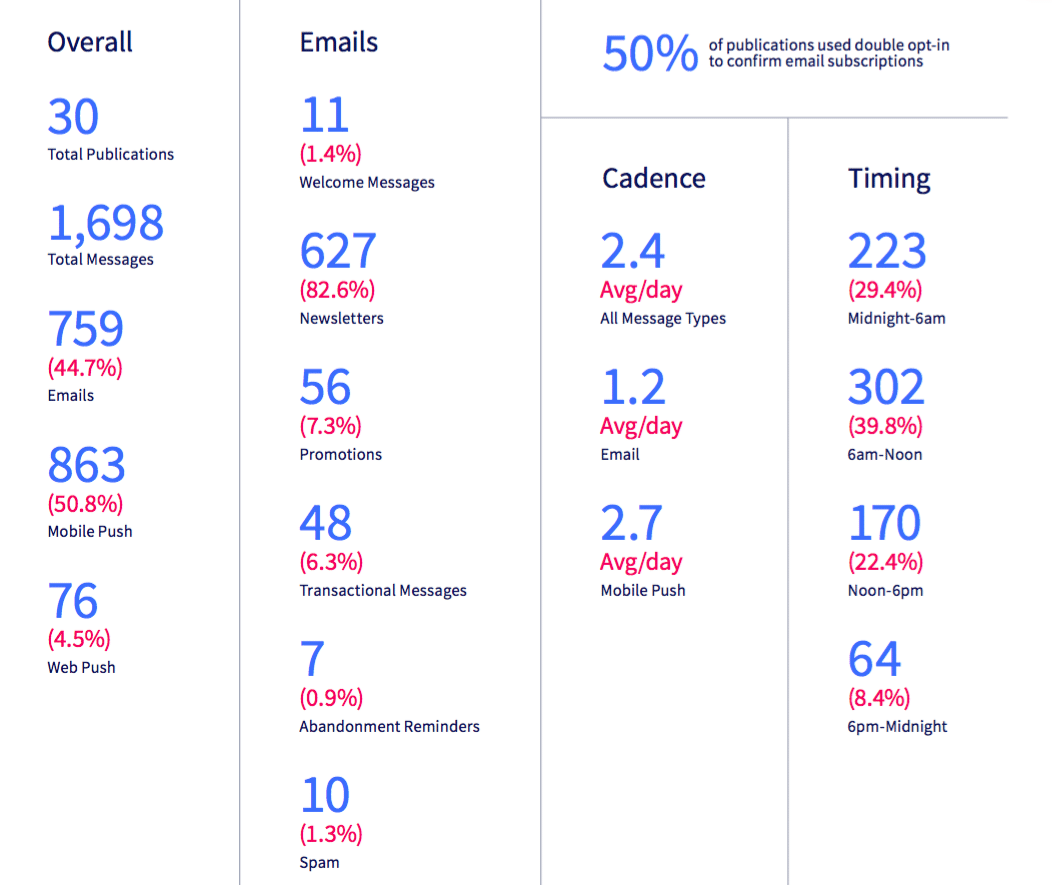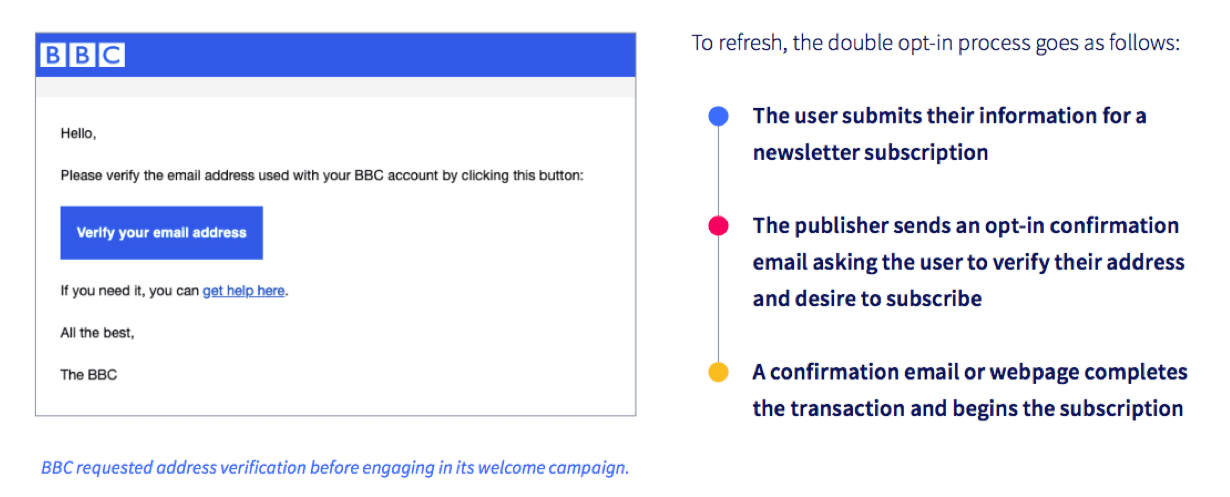Cross-channel marketing has come, and it’s here to stay. However, it’s no longer just being used by industries, such as retail and e-commerce, but virtually all consumer-facing businesses. This includes news publications, from online to print to broadcast.
A new report, News in the Age of Personalized Marketing, from cross-channel growth marketing firm Iterable, highlights surprising findings on how media companies are relating to consumers through email, mobile and other digital methods of communication.
As the first research study of its kind, Iterable examined the cross-channel experience of 30 leading publications—including The New York Times, BBC, CNN, and Fox News—to determine how they’re giving readers the power to control their experience with the news. The study analyzed tactics to identify what worked and what growth opportunities can create a mutually beneficial customer-publisher experience.
Media marketing by the numbers:

“The mediums and methods used to consume news have the potential for a highly personalized experience. And yet, publications often face technological limitations in making this experience a reality for their subscribers,” said Alyssa Jarrett, director of brand and content marketing at Iterable, in a news release. “Many of the publications in our research are industry leaders when it comes to cross-channel communications. The next step is personalizing that messaging for every news seeker.”

The publications surveyed showed that while newsletter creation and curation are the primary focus of their communications, opportunities are being lost that negatively impact the customer journey. In order to guide customers towards premium subscription, publications have to showcase value and relevance, such as by utilizing their email service provider (ESP) to focus on personalization and data integration.
The double opt-in:

Other key findings of the report include:
- Mobile is the driver. A majority of messages received were mobile push notifications (50.8 percent) and many email newsletters were optimized for mobile viewing.
- Welcome campaigns are vastly underutilized in the news media industry. Over 70 percent of people expect an email after subscribing, but only 30 percent of publications sent welcome campaigns. Given that welcome emails generate 5x more clicks than regular marketing campaigns, this is clearly a missed opportunity to build customer connections when engagement is most likely.
- It pays to go premium: 52 percent of editors believe subscription and premium memberships are the revenue driver of the future, yet only 35.3 percent of publications with premium subscriptions sent out a promotion or cart abandonment message.








